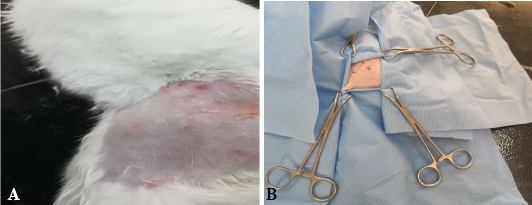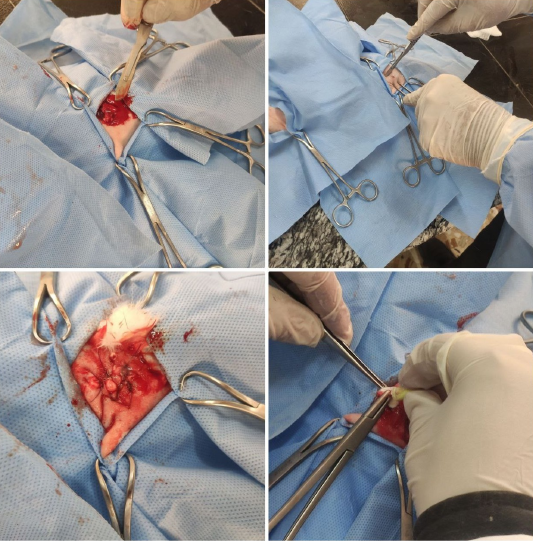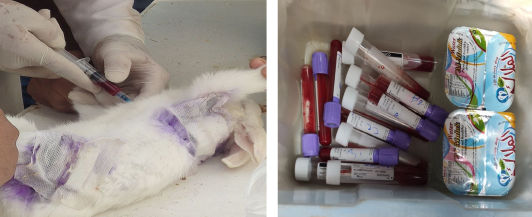Impact of Serratiopeptidase vs. N-Acetyl Cysteine (NAC) on Skin Grafting Healing in Albino Male Rabbits
Impact of Serratiopeptidase vs. N-Acetyl Cysteine (NAC) on Skin Grafting Healing in Albino Male Rabbits
Hasan Ali Al-Sailawi1, Araa Ali Hadi1, Hussein A. Raheem2, Mustafa Mudhafar3,4, Sahi J Dhahi5, Qais R. Lahhob6*
(A) Shaving and cleaning of skin for the surgical operation and (B) Preparation of animals for the surgical operation.
The surgical procedure steps which made during skin grafting.
The blood sample (a) collection and (b) storing.
Histological section for skin graft of rabbit with (a) without treated and (b) treated with NAC.
Histological section for skin graft of rabbit (a) control group and (b) treated group with using serattopeptidease.










